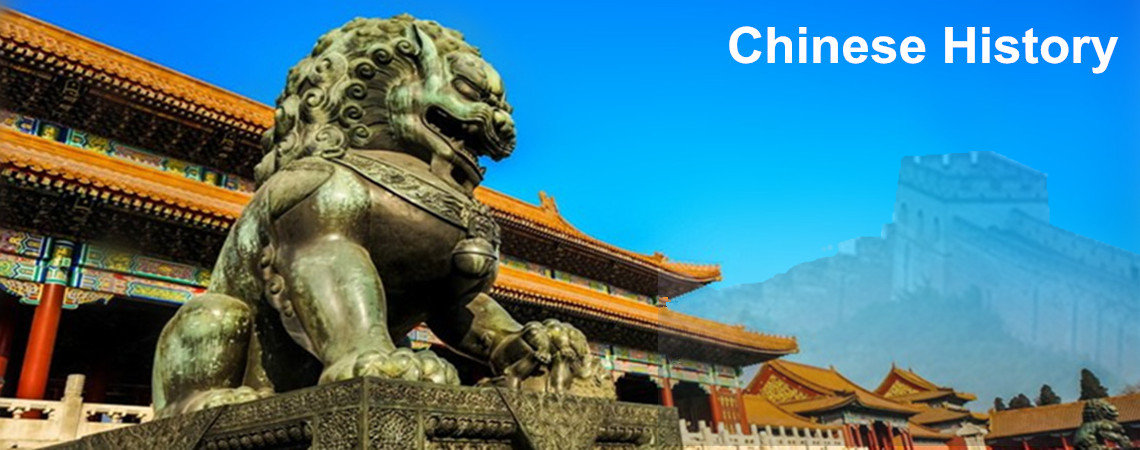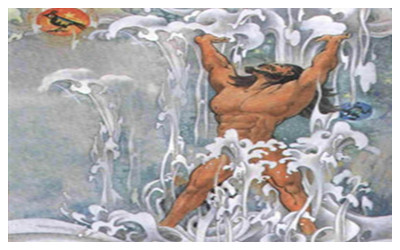
Pangu 盘古
 Pangu 盘古 is the first living being and the creator of all in some versions of Chinese mythology. The Pangu myth appears to have been preceded in ancient Chinese literature by the existence of Shangdi or Taiyi (of the Taiyi Shengshui). Other Chinese myths, such as those of Nuwa and the Jade Emperor, try to explain how people were created and do not necessarily explain the creation of the world. There are many variations of these myths.
Pangu 盘古 is the first living being and the creator of all in some versions of Chinese mythology. The Pangu myth appears to have been preceded in ancient Chinese literature by the existence of Shangdi or Taiyi (of the Taiyi Shengshui). Other Chinese myths, such as those of Nuwa and the Jade Emperor, try to explain how people were created and do not necessarily explain the creation of the world. There are many variations of these myths.Legend of Pangu
In the beginning, there was nothing in the universe except a formless chaos. This chaos coalesced into a cosmic egg for about 18,000 years. Within it, the perfectly opposed principles of Yin and Yang became balanced, and Pangu emerged (or woke up) from the egg. Pangu is usually depicted as a primitive, hairy giant who has horns on his head and wears fur. Pangu began creating the world: he separated Yin from Yang with a swing of his giant axe, creating the Earth (murky Yin) and the Sky (clear Yang). To keep them separated, Pangu stood between them and pushed up the Sky. With each day, the sky grew ten feet (3 meters) higher, the Earth ten feet thicker, and Pangu ten feet taller. This task took yet another 18,000 years. In some versions of the story, Pangu is aided in this task by the four most prominent beasts, namely the Turtle, the Qilin, the Phoenix, and the Dragon.
After the 18,000 years had elapsed, Pangu died. His breath became the wind, mist and clouds; his voice, thunder; his left eye, the sun; his right eye, the moon; his head, the mountains and extremes of the world; his blood, rivers; his muscles, fertile land; his facial hair, the stars and Milky Way; his fur, bushes and forests; his bones, valuable minerals; his bone marrow, sacred diamonds; his sweat, rain; and the fleas on his fur carried by the wind became animals.
In the beginning, there was nothing in the universe except a formless chaos. This chaos coalesced into a cosmic egg for about 18,000 years. Within it, the perfectly opposed principles of Yin and Yang became balanced, and Pangu emerged (or woke up) from the egg. Pangu is usually depicted as a primitive, hairy giant who has horns on his head and wears fur. Pangu began creating the world: he separated Yin from Yang with a swing of his giant axe, creating the Earth (murky Yin) and the Sky (clear Yang). To keep them separated, Pangu stood between them and pushed up the Sky. With each day, the sky grew ten feet (3 meters) higher, the Earth ten feet thicker, and Pangu ten feet taller. This task took yet another 18,000 years. In some versions of the story, Pangu is aided in this task by the four most prominent beasts, namely the Turtle, the Qilin, the Phoenix, and the Dragon.
After the 18,000 years had elapsed, Pangu died. His breath became the wind, mist and clouds; his voice, thunder; his left eye, the sun; his right eye, the moon; his head, the mountains and extremes of the world; his blood, rivers; his muscles, fertile land; his facial hair, the stars and Milky Way; his fur, bushes and forests; his bones, valuable minerals; his bone marrow, sacred diamonds; his sweat, rain; and the fleas on his fur carried by the wind became animals.







 Ask Questions ?
Ask Questions ?